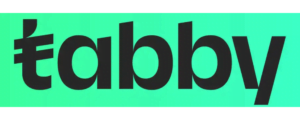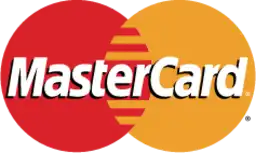Creating a graphic design portfolio is a crucial step for any aspiring graphic designer, design student, or professional looking to showcase their skills and attract potential clients or employers. In this comprehensive guide, we will showcase five exceptional graphic design portfolios and provide a step-by-step guide on how to build your own. With tips, tools, and best practices, you’ll be well on your way to creating an impressive graphic design portfolio that stands out.
1. Stunning Graphic Design Portfolio Examples
Example 1: Jessica Walsh
Jessica Walsh’s portfolio is a perfect blend of creativity and professionalism. Her portfolio showcases a variety of projects, from branding to interactive design, all presented with high-quality visuals and detailed descriptions. The use of bold colors and dynamic layouts makes her work stand out, providing a true graphic design showcase. Click to see her portfolio.
Example 2: Mike Kus
Mike Kus’s portfolio is a masterclass in simplicity and effectiveness. His clean and minimalistic design allows his work to shine. Each project is displayed with large images and concise explanations, making it easy for viewers to understand his design process and the impact of his work. Click to see his portfolio.
Example 3: Tobias van Schneider
Tobias van Schneider’s portfolio is a great example of how to create a portfolio that reflects your personality. His portfolio is visually striking and easy to navigate, featuring a mix of personal projects and professional work. The interactive elements and unique layout make his portfolio memorable and engaging. Click to see his portfolio.
Example 4: Lotta Nieminen
Lotta Nieminen’s portfolio stands out for its cohesive visual style and attention to detail. Her use of pastel colors and elegant typography creates a sophisticated and approachable graphic design showcase. Each project is accompanied by detailed case studies, providing insights into her design process and the thought behind each piece. Click to see his portfolio.
Example 5: Malika Favre
Malika Favre’s portfolio is a vibrant and bold example of how to build a design portfolio that captures attention. Her work is characterized by its striking use of color and geometric shapes. The portfolio is easy to navigate, with each project displayed in a gallery format that highlights her unique style and artistic vision. Click to see her portfolio.
2. How to Build Your Own Graphic Design Portfolio
Creating a standout graphic design portfolio involves careful planning and execution. Here’s a step-by-step guide to help you build a design portfolio that showcases your skills and attracts potential clients or employers.
Step 1: Define Your Purpose and Audience
Before you start building your graphic design portfolio, it’s important to define its purpose and target audience. Are you looking to attract clients, apply for jobs, or showcase your projects? Understanding your goals will help you tailor your portfolio to meet the needs of your audience.
Step 2: Select Your Best Work
Your portfolio should feature a curated selection of your best work. Choose projects that showcase your skills, creativity, and versatility. It’s better to have a few high-quality pieces than a large number of mediocre ones. Make sure each project demonstrates your design process, problem-solving abilities, and the impact of your work.
Step 3: Create Case Studies
For each project in your portfolio, create a detailed case study that outlines the project brief, your design process, and the final outcome. Include high-quality images, sketches, and mockups to provide a comprehensive view of your work. This will help potential clients or employers understand your approach and the value you bring to a project.
Step 4: Design Your Portfolio Layout
The layout of your graphic design portfolio should be clean, professional, and easy to navigate. Use a consistent design language throughout your portfolio, including typography, colors, and spacing. Make sure your work is the focal point, and avoid clutter or distracting elements.
Step 5: Choose the Right Platform
There are several platforms available for creating online portfolios, such as Behance, Dribble, Adobe Portfolio, and personal websites. Choose a platform that aligns with your goals and offers the features you need to showcase your work effectively. Consider using a custom domain name to give your portfolio a professional touch.
Step 6: Optimize for SEO
To increase the visibility of your graphic design portfolio, optimize it for search engines. Use relevant keywords, such as graphic design portfolio, build a design portfolio, and portfolio examples, in your content and metadata. This will help potential clients or employers find your portfolio when searching for graphic design services.
Step 7: Gather Feedback and Iterate
Once you’ve created your portfolio, gather feedback from peers, mentors, and industry professionals. Use their insights to make improvements and refine your portfolio. Continuously update your portfolio with new projects and remove outdated or less relevant work to keep it fresh and relevant.
Step 8: Promote Your Portfolio
Promote your graphic design portfolio through various channels, such as social media, professional networks, and design communities. Share your work regularly and engage with your audience to build your reputation and attract potential clients or employers.
Additionally, if you want to learn how to build a stunning graphic design portfolio then join the Bright Future Training Institutegraphic designing classes in Dubai.
3. Tips, Tools, and Best Practices
Tips for Creating an Impressive Portfolio
- Show Your Versatility: Include a variety of projects that showcase different skills and styles.
- Highlight Your Unique Selling Points: Emphasize what sets you apart from other designers, whether it’s your design philosophy, technical skills, or creative approach.
- Keep It Updated: Regularly update your portfolio with new projects and remove outdated work.
- Tell a Story: Use case studies to tell the story behind each project, from the initial brief to the outcome.
- Be Selective: Only include your best work to create a strong and cohesive portfolio.
Tools for Building a Graphic Design Portfolio
- Adobe Portfolio: A popular platform for creating professional portfolios with ease.
- Behance: A community for showcasing and discovering creative work.
- Dribbble: A platform for designers to share their work and get feedback.
- WordPress: A versatile platform for building custom portfolio websites.
- Squarespace: A user-friendly website builder with beautiful portfolio templates.
Best Practices for a Successful Portfolio
- User Experience: Ensure your portfolio is easy to navigate and user-friendly.
- High-Quality Images: Use high-resolution images to showcase your work in the best possible light.
- Consistent Branding: Maintain a consistent design language throughout your portfolio to create a cohesive look and feel.
- SEO Optimization: Optimize your portfolio for search engines to increase visibility.
- Engaging Content: Use engaging and informative content to provide context and insights into your work.
Conclusion
Building an impressive graphic design portfolio is essential for showcasing your skills and attracting potential clients or employers. By following the steps outlined in this guide and drawing inspiration from exceptional portfolio examples, you can create a portfolio that stands out and highlights your unique talents. Remember to keep your portfolio updated, gather feedback, and promote it through various channels to maximize its impact. With dedication and creativity, you’ll be well on your way to building a design portfolio that opens doors to exciting opportunities in the world of graphic design.












